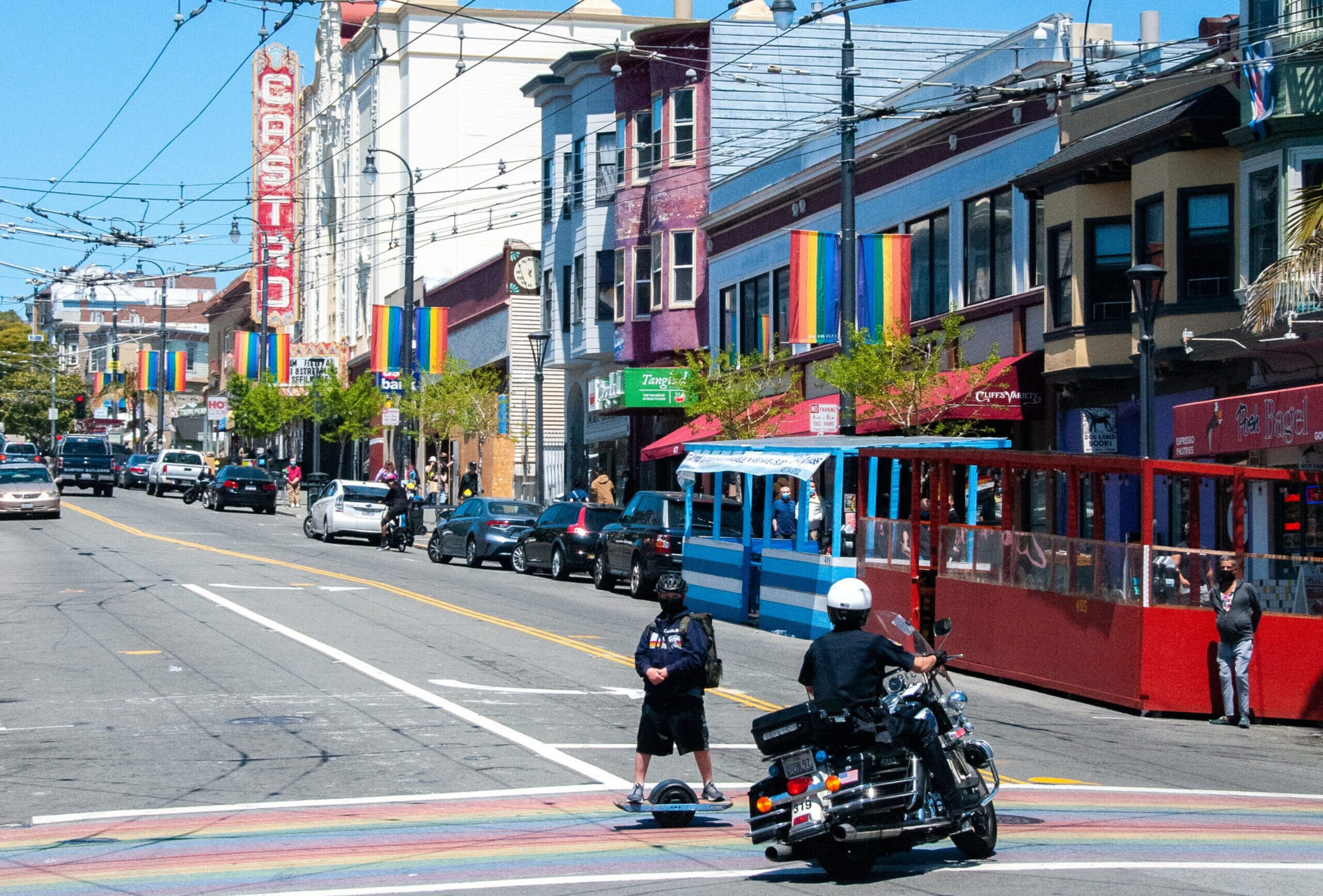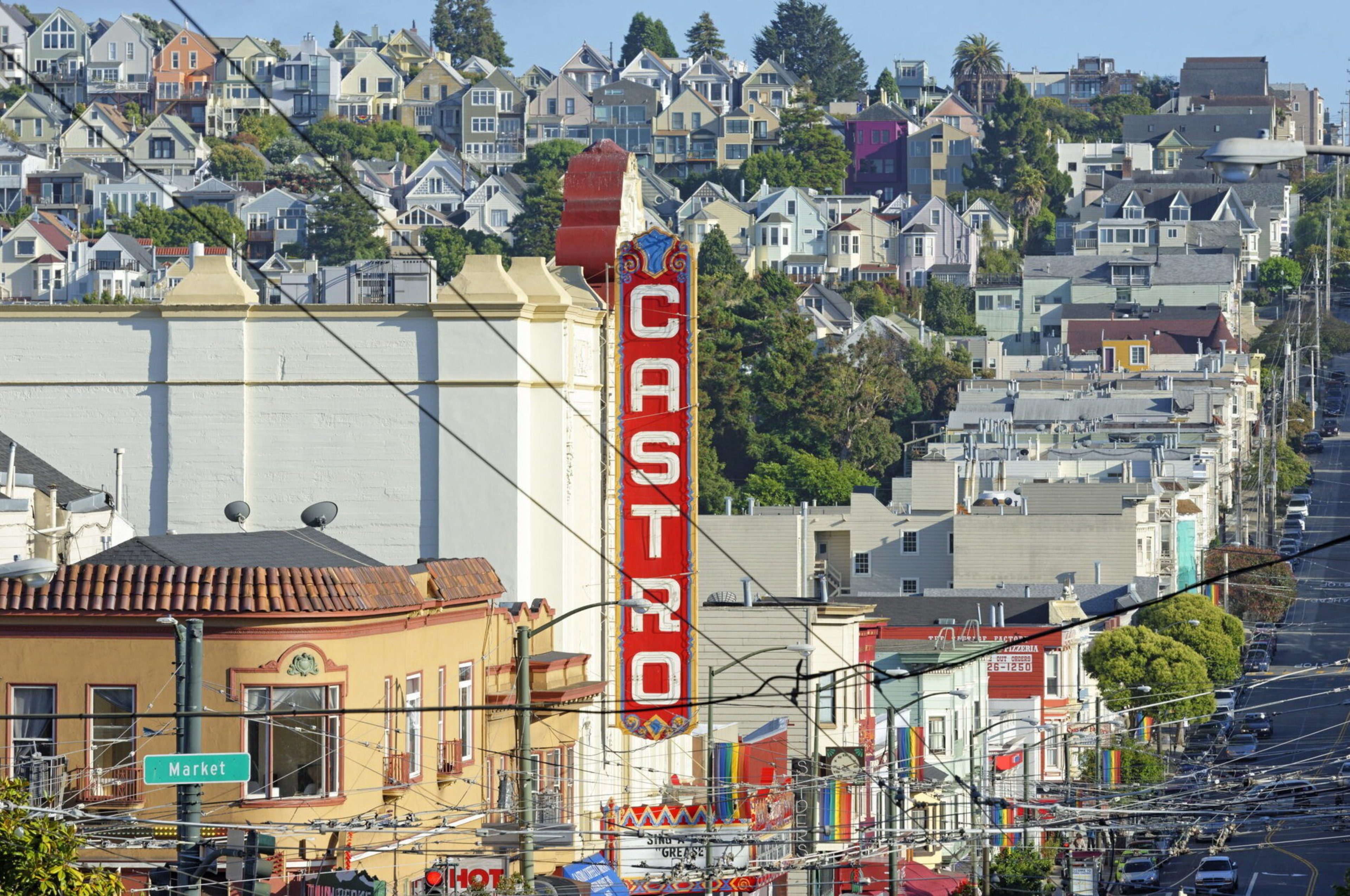The Castro Upper Market Community Benefit District (CBD) board unanimously voted to turn down a $695,000 grant to install a network of private safety cameras (opens in new tab) Monday evening, ending a months-long community fight (opens in new tab) over whether or not to become the sixth CBD in San Francisco to operate a camera network intended to improve neighborhood public safety. The decision came despite evidence of support for the program, including a community survey (opens in new tab) that showed moderate support for cameras.
The CBD’s initial camera program enthusiasm was no match for its opponents, who over the past few months mounted a vocal opposition campaign (opens in new tab), citing concerns over privacy and surveillance and claims that the CBD’s survey seemed designed to skew results. Not a single camera program supporter spoke up at Monday’s meeting. Thus chastised, the CBD board, one by one, each voted ‘No.’
“We are an unelected body that would be imposing a system on this neighborhood that I believe is really outside the scope of what the CBD ought to be doing, and there’s certainly a lot of opposition to it,” said board member Crispin Hollings, before he urged fellow board members to vote against accepting the grant.
Some San Francisco neighborhoods, including Fisherman’s Wharf and Japantown, have private networks of cameras in commercial corridors or residential neighborhoods. Placed on private property, they are intended to serve as an unbiased witness to crime and accidents, in addition to deterring crimes from happening in the first place.

The cameras are controlled by community non-profits: either CBDs (opens in new tab), non-profits in commercial corridors that get their funding from special neighborhood taxes, or SF SAFE, a nonprofit that supports neighborhood watch groups and other public safety initiatives.
Those in favor of the private cameras say that having footage in an accessible place and governed by a set of agreed-upon policies is an improvement on private citizens haphazardly posting Ring videos to Nextdoor, while ensuring that the neighborhood—not the City—controls the footage.
Chris Larsen, the tech mogul who has been providing funding to jumpstart these programs (opens in new tab), says he makes grants available to those who request them, but it’s ultimately up to local entities to decide whether or not to adopt a program. He funds a variety of public safety initiatives: in addition to the camera funding, Larsen has also provided $100,000 towards a new Public Safety Ambassador program in the Castro (opens in new tab).
“I’m from San Francisco, and I believe in this city…We work closely with people in the community who know how to best support residents and businesses in each neighborhood. Any project, including the funding of cameras, is driven and maintained by the community,” Larsen wrote in an email to Here/Say Media.
The Castro’s stance towards the camera program contrasts with other CBDs who have welcomed the grants. But the other CBDs that have implemented the cameras are mostly tourist neighborhoods: Fisherman’s Wharf (opens in new tab), Japantown (opens in new tab), Mid-Market (opens in new tab), Tenderloin (opens in new tab) and Union Square (opens in new tab). The Castro is a tourist destination but also a tight-knit community whose history with police violence (opens in new tab) has led to deep-rooted community concern around law enforcement and surveillance.
Those misgivings overrode the results of a community survey (opens in new tab) of 774 residents, which found more support than opposition for the program: 62 percent of respondents said they would or might support a well-managed camera network. In addition, the survey found that cameras were more supported by respondents who both lived and worked in the Castro area, or by respondents who had personally been the victim of a crime.

The camera program’s opponents argued that survey questions such as “My opinion about the proposal to install safety cameras with a well-managed camera program with no direct access to the police or the public is…” were biased and priming.
They also argued that public cameras would not help with public safety, but instead increase police surveillance of underprivileged groups, pointing to a lawsuit (opens in new tab) alleging the SF Police Department improperly accessed cameras during last year’s Black Lives Matters protests.
“We were raising these concerns on day one…about the abuse of this technology to survey immigrants, peaceful protestors [and be] exploited and hacked to observe children in schools,” Lee Hepner, a legislative aide to Aaron Peskin, said at the meeting, referring to the fact that many community groups in the Castro felt the CBD had not taken their early concerns seriously.
Existing San Francisco data shows that public cameras can help deter certain crimes. Since 2005, there have been 71 city-owned “Community Safety Cameras” (opens in new tab) in San Francisco. In 2008, the City commissioned a 184 page report (opens in new tab) on whether the cameras were effective in deterring crime. The report found that the cameras had no impact on violent crimes such as assault, but did have a significant deterrent effect on property crimes, reducing property crimes by 24 percent within 100 feet of the cameras.
One unlikely ally of the camera program is San Francisco’s district attorney’s office, led by Chesa Boudin, who campaigned for the position and won on a progressive, anti-incarceration platform. Chris Larsen recently donated $100,000 (opens in new tab) to the campaign opposing the recall of Boudin.
“Some of my best cases are where I have people staring into the Nest cameras,” Assistant District Attorney Eric Quandt said at a Hayes Valley public safety meeting earlier this year (opens in new tab). He also noted that the burglars committing property crimes are professionals that are part of organized crime rings in the East Bay.
Working with the police department, Japantown’s CBD implemented 119 cameras in burglary hotspots between 2018 and 2020, according to Grace Horikiri, the CBD’s executive director.
“All in all it’s been a big benefit to our community, even though in the beginning I heard comments like ‘Oh, you’re going to have big brother watching,’” Horikiri said. “On Geary Boulevard between Laguna and Webster there used to be a lot of car break-ins, and I noticed that they lessened ever since the cameras have gone up.”
Horikiri said that the CBD only reviews camera footage when a request comes in. She added that the footage has been used for a variety of purposes, from catching people who had been tagging Japantown with anti-Asian graffiti to providing car accident footage to insurance companies to providing footage to police of a store being broken into. In addition to catching criminals, camera footage has also been used to exonerate wrongfully accused suspects (opens in new tab).
Monday’s Castro meeting ended on a forward-looking note, with camera program opponents saying they were committed to exploring other alternatives for improving public safety.
“The CBD can rebuild some trust and bridge with the community organizations who have been very concerned with this up until this point….We would like to continue collaborating on community-based alternatives that keep our neighborhood safe,” Hepner said at the meeting, after the board voted ‘No.’